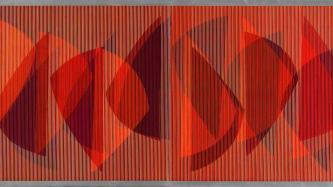
How an alumna helped put Latin American art on the map

Mari Carmen Ramírez, AM'78, PhD'89, helps put Latin American art on the map. As the Wortham Curator of Latin American Art at the Museum of Fine Arts Houston, Ramirez has built one of the top collections of Latin American art in the world.
Forty years ago, Latin American art was largely unknown beyond Frida Kahlo or Diego Rivera. Today, Latin American artists feature in major museum exhibitions, sell their work for millions of dollars, and are increasingly studied by art historians, in part because of the efforts of Mari Carmen Ramírez, AM’78, PhD’89.
As the Wortham Curator of Latin American Art at the Museum of Fine Arts Houston (MFAH), and previously at the Blanton Museum of Art at the University of Texas–Austin, Ramírez has built what the New York Times described as one of the top collections of Latin American art in the world. She developed blockbuster exhibitions such as 2004’s Inverted Utopias, which featured South American avant-garde artists who had rarely been seen in the United States—including Brazil’s Lygia Clark, Venezuela’s Gego, and Argentina’s Xul Solar. That exhibit, among others, prompted Time magazine to name her one of the 25 most influential Hispanics in America in 2005.
Under Ramírez’s leadership, in 2012 the MFAH launched the International Center for the Art of the Americas, a digital archive of more than 12,000 primary source documents—letters, manifestos, and other texts that provide, she says, “access to the intellectual production of the artists.”
Ramírez talked to Tableau about the past, present and future of Latin American art scholarship.
Header image courtesy of Carlos Cruz-Diez / Artists Rights Society, New York / ADAGP, Paris


